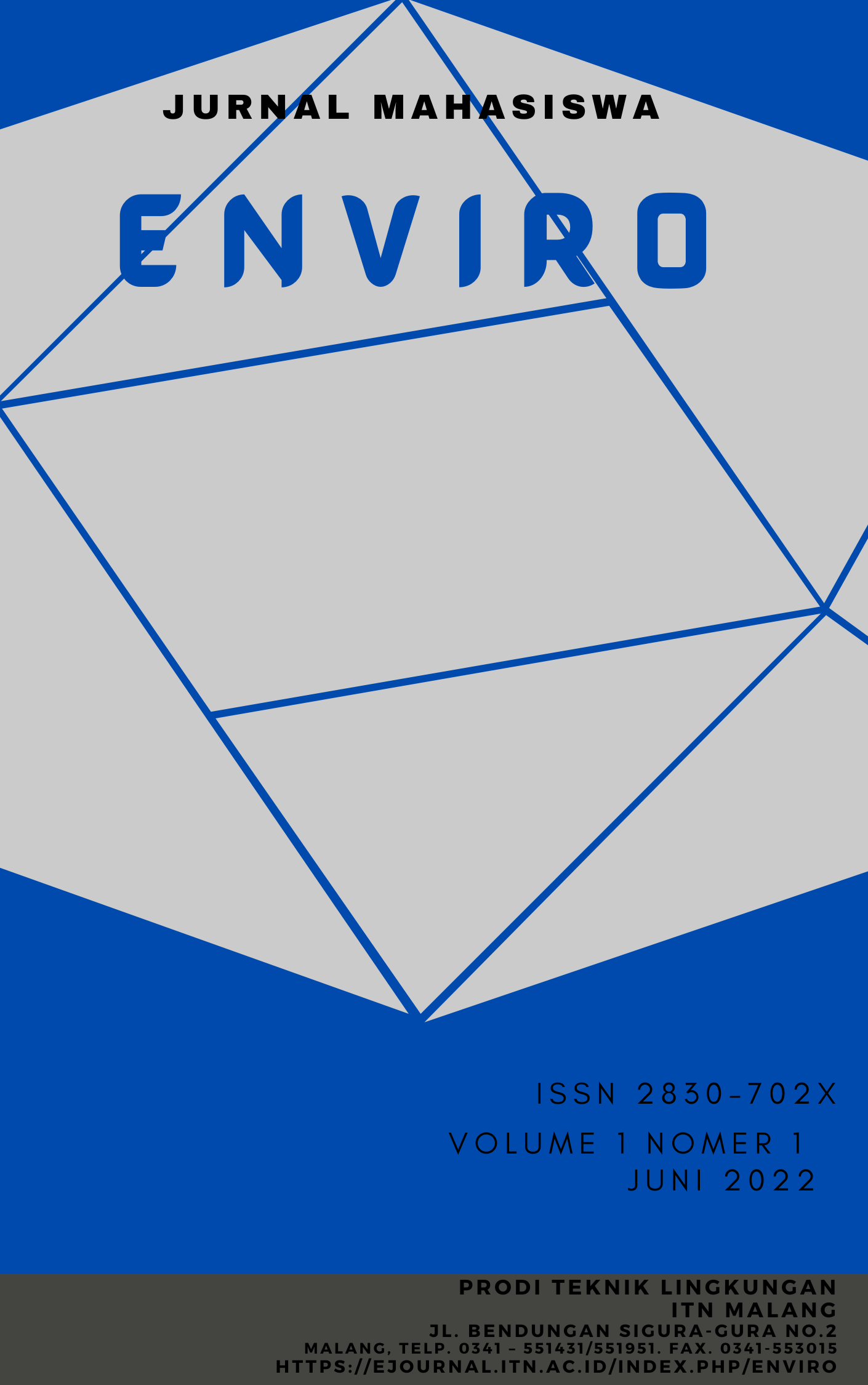OPTIMIZING THE RECEPTACLE AND WASTE REMOVAL BY APPLYING GEOGRAPHIC INFORMATION SYSTEM (SIG) AT KARANGPLOSO MARKET, MALANG REGENCY
Abstract
The operational time of the Karangploso market organized by the market management authority begins from 8 am - 5 pm. The waste management system at this market is not sufficiently taken care of, with a lot of waste is scattered around the market stalls that require proper management. This research aims to discover the waste characteristics by designing and proposing a waste management system in the waste selection, receptacle, assortment, and waste removal.
Waste generation sampling refers to a sampling procedure that points out waste generation sample collection and measurement along with city waste composition (SNI 19-3964-1994) performed in 8 consecutive days on 83 respondents who represented all vendors at Karangploso market. The sampling was carried out by collecting the waste of each stall for further measurement. It was proceeded to find out the volume of the waste and classify by considering the composition followed by the planning of waste collection and removal line using Arcgis 10.3 based on the distance and time.
The selection and receptacle systems were meant to calculate the amount of waste generation with the average results of 1362,84kg/day; wet waste characteristic of 1079kg/day; dry waste 283,84 kg/day. It was recommended by providing waste bins based on each distinctiveness to avoid misplacing. The waste collection system was planned to create a gap in each cart for both wet and dry waste and proceeded by the alternative route of the waste collection process. Three alternative routes were formed in the back of the waste cart and the optimum route on line 3. On the front side of the cart container of two alternative routes, route one was selected to be the optimum route. The waste removal system was carried out by determining the effective and efficient alternative route by utilizing Arcgis 10.3 software. Three alternative routes were created for the waste removal system from the market to the Randuagung disposal site. Thus, route 2 was selected as the effective and efficient line.

